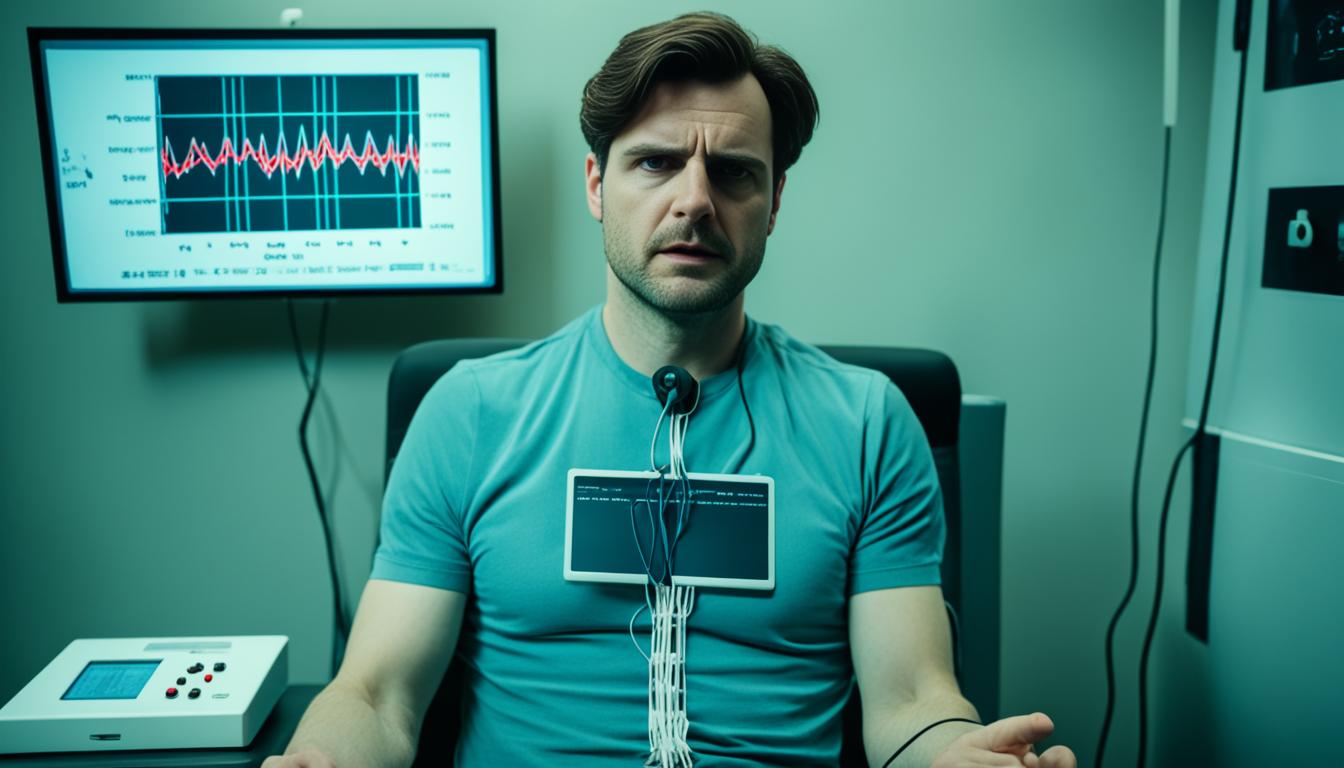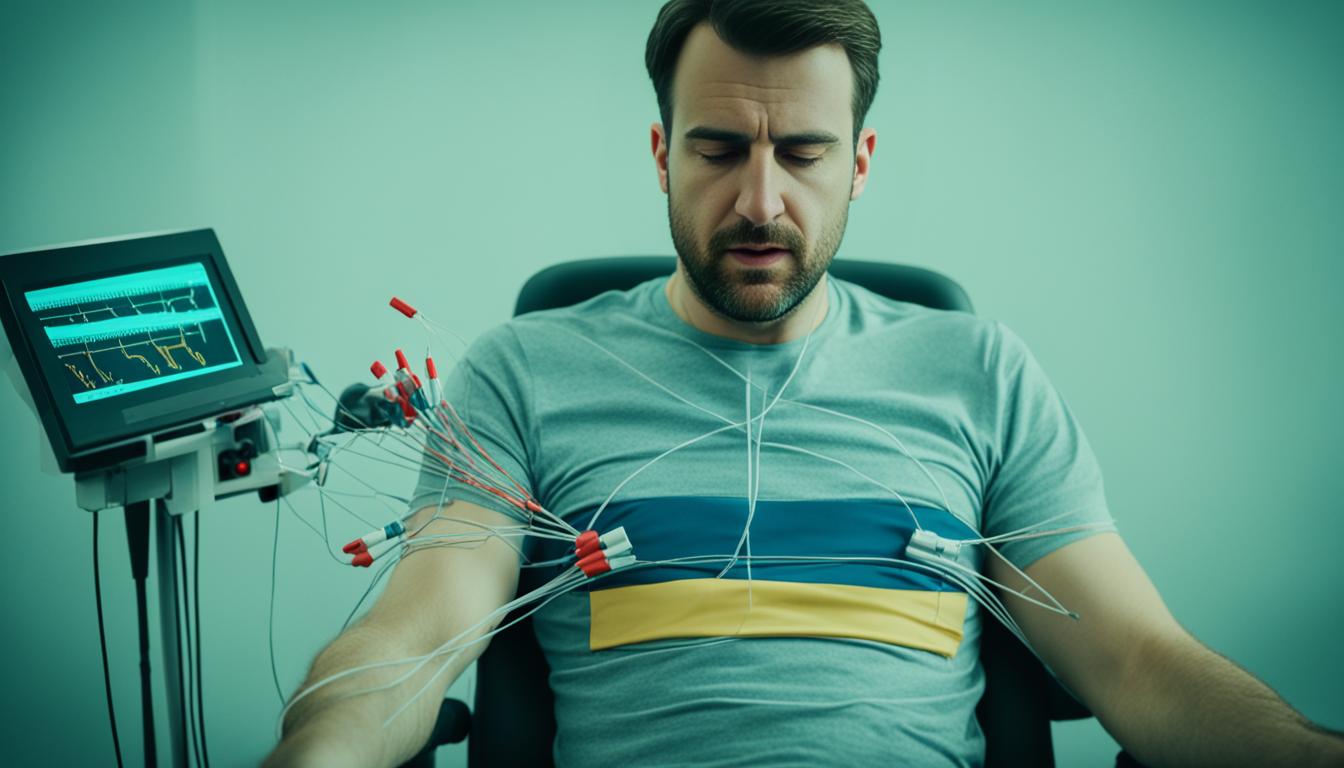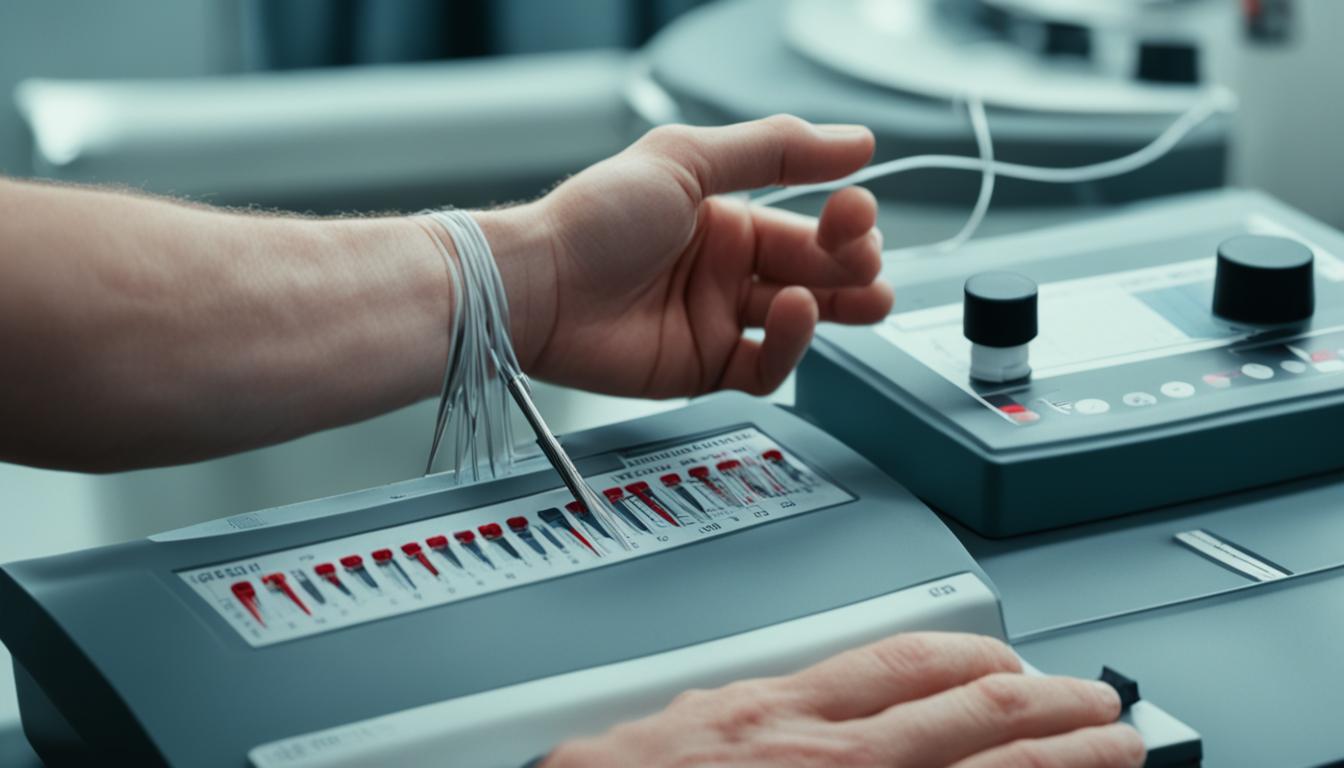Unveiling the Truth: How Accurate are Polygraphs?
Did you know that polygraph tests have been widely used for decades to detect deception? These lie detectors, often seen in crime dramas, have become a staple in investigations and employee screenings. But the burning question remains: just how accurate are polygraphs?
The reliability of lie detectors has long been a subject of debate, with some organizations claiming accuracy rates of over 90%, while others argue that they are merely pseudoscience. The conflicting evidence, differing definitions of deception, and numerous variables involved make it a challenging task to assess the true accuracy of polygraphs.
Key Takeaways:
- Polygraph tests have been used for decades to detect deception.
- There is ongoing debate regarding the accuracy and validity of polygraphs.
- Conflicting claims from organizations add to the uncertainty.
- Multiple variables can influence the accuracy of polygraph tests.
- Further research and standardized testing procedures are needed to establish the true accuracy of polygraphs.
The Accuracy Debate: Conflicting Claims and Research
When it comes to the accuracy of polygraph tests, there are conflicting claims and ongoing research. The American Polygraph Association asserts a high accuracy rate for polygraphs, while the American Psychological Association disputes their effectiveness.
Research has shown that humans have a natural inclination to lie, which can impact the results of polygraph tests. Additionally, studies have highlighted various factors that can affect accuracy, such as cultural backgrounds, anxiety levels, and deception skills.

It is important to consider these conflicting claims and ongoing research when evaluating the effectiveness of polygraph tests. The results can vary depending on the context and the individual being tested. Further research is necessary to reach a consensus on the true accuracy and reliability of polygraphs.
Factors Affecting Polygraph Accuracy
When it comes to polygraph tests, several variables can significantly influence their accuracy. These variables encompass various aspects, including the emotional state of the test-taker, the type and wording of the questions asked, the training and biases of the examiner, and the test-taker’s age, gender, and physical or mental condition.
Emotional state: The emotional state of the individual undergoing the polygraph test can impact the accuracy of the results. heightened emotions, such as anxiety or fear, may affect physiological responses, leading to potential inaccuracies in the test outcomes.
Type and wording of questions: The formulation and phrasing of the questions asked during the polygraph test can also play a role in the accuracy of the results. The clarity, specificity, and sensitivity of the questions can influence the test-taker’s physiological responses, ultimately affecting the accuracy of the assessment.
Training and biases of the examiner: The training and experience of the polygraph examiner may introduce biases and influence the accuracy of the test. Examiners with extensive training and expertise are generally more adept at interpreting physiological responses effectively, leading to more accurate results.
Test-taker’s characteristics: The characteristics of the test-taker, such as age, gender, physical condition, and mental state, can impact the accuracy of the polygraph test. These factors can influence the physiological responses measured during the examination, potentially leading to variations in the test results.
Use of medications or substances: Certain medications or substances can affect the individual’s physiological responses, leading to inaccuracies in the polygraph test. It is essential for both the test-taker and the examiner to consider any potential interference from medications or substances before conducting the examination.
Proper attachment of devices and creating a comfortable environment are crucial for obtaining more accurate results. Ensuring that the polygraph devices are correctly attached and providing a comfortable testing environment can minimize external factors that may alter the accuracy of the test.

| Variable | Influence on Accuracy |
|---|---|
| Emotional state | Can impact physiological responses and introduce inaccuracies. |
| Type and wording of questions | The formulation and phrasing can influence physiological responses. |
| Training and biases of the examiner | Examiner expertise and biases may impact interpretation and accuracy. |
| Test-taker’s characteristics | Age, gender, physical, and mental condition can introduce variations. |
| Use of medications or substances | Certain substances can interfere with physiological responses. |
Overview of Polygraph Test Studies
When it comes to assessing the accuracy of polygraph tests, numerous studies have been conducted, providing valuable insights into their effectiveness. However, these studies have yielded inconsistent results, leaving room for ongoing debate and further research.
Some studies claim higher accuracy rates for polygraph tests, suggesting that they can reliably detect deception. These findings support the argument that polygraphs can be a useful tool in uncovering the truth. However, other studies question the reliability of lie detectors, highlighting potential limitations and challenges in their accuracy.
Meta-analyses and reviews of the existing literature on polygraph tests have indicated the need for more standardized testing procedures. These comprehensive analyses emphasize the importance of further research to establish the true accuracy of polygraphs. By adopting consistent methodologies and expanding sample sizes, researchers can gain a more comprehensive understanding of polygraph accuracy.
Limitations of Polygraph Research
The reliability and accuracy of polygraph research are subject to several limitations that need to be acknowledged. These limitations hinder the establishment of a clear consensus on the effectiveness and validity of polygraph testing.
- Lack of Standardization: One significant limitation is the lack of standardized testing procedures across different polygraph studies. The absence of uniform guidelines and protocols makes it difficult to compare and draw definitive conclusions from the research.
- Use of Simulated Scenarios: Another challenge lies in the reliance on simulated scenarios during polygraph testing. While these scenarios aim to mimic real-life situations, they may not fully capture the complexities and nuances of genuine deceptive behavior.
- Potential for Researcher Bias: The presence of researcher bias is a critical limitation in polygraph research. The preconceived notions and expectations of the researchers conducting the studies can unintentionally influence the outcomes, potentially leading to skewed results.
Moreover, the lack of consensus on the reliability of polygraph evidence has resulted in its inadmissibility in federal courts. The inherent flaws and challenges associated with polygraph testing raise concerns about its accuracy and effectiveness as a lie detection method.
| Limitation | Description |
|---|---|
| Lack of Standardization | The absence of uniform guidelines and protocols in polygraph research |
| Use of Simulated Scenarios | Relying on scenarios that may not fully represent real-life deception |
| Potential for Researcher Bias | The influence of preconceived notions and expectations on results |
Polygraphs vs. Other Lie Detection Methods
The polygraph is not the only method available for detecting deception. There are several alternative lie detection methods that can be utilized to gather information and assess truthfulness.
- Voice Stress Analysis: This method analyzes changes in vocal frequency to detect signs of stress or deception.
- Micro Expressions: These involuntary facial expressions can provide insights into a person’s true emotions and can be indicative of deception.
- Eye-Tracking: By tracking eye movements, this method aims to identify patterns or behaviors associated with lying.
- Brain Imaging: Techniques such as functional magnetic resonance imaging (fMRI) and electroencephalography (EEG) examine brain activity to identify deception-related neural patterns.
- Behavioral Analysis: Observing and analyzing behavioral cues, such as body language and speech patterns, can help in detecting deception.
Each of these methods has its advantages and limitations. While polygraph tests are widely used, they have been subject to debate regarding their accuracy and reliability. Similarly, other methods also have their own set of challenges and are not immune to criticism.
The Controversial Use of Polygraphs
Despite the ongoing debate surrounding the accuracy and reliability of polygraph tests, they continue to be routinely employed by government agencies and law enforcement for various purposes, including employee screening and criminal investigations.
The belief in the efficacy of polygraphs, their potential as a deterrent, and their role in the theatrical aspect of interrogation have contributed to their continued use. Although their effectiveness may be questioned, the use of polygraph tests remains prevalent in many investigative processes.
The polygraph’s unique ability to measure physiological responses, such as changes in heart rate, blood pressure, and respiration, has made it a valuable tool in investigations. By analyzing these responses, examiners can infer whether a person is telling the truth or being deceptive.
While polygraph tests have their critics, proponents argue that they can provide valuable leads in investigations and help identify potential suspects. The results of polygraph tests are often used as an investigative tool, prompting further scrutiny and gathering additional evidence.
| Benefits of Polygraph Tests | Drawbacks of Polygraph Tests |
|---|---|
|
|
It is important to note that the results of polygraph tests are not admissible as evidence in many court systems due to their controversial nature and associated limitations. However, they can still be used to generate leads and guide further investigations.
Polygraphs in Employee Screening
Polygraph tests have been a common practice for employee screening, particularly in sensitive positions where trust and security are paramount. They are employed to assess the honesty and integrity of prospective employees, especially in fields such as law enforcement, intelligence, and government agencies.
The rationale behind using polygraphs in employee screening is to minimize the risk of hiring individuals who may be prone to dishonesty or possess undisclosed information that could compromise national security or organizational integrity.
The controversial nature of polygraph tests in employee screening has led to varying legal frameworks across different jurisdictions. Some countries have banned the use of polygraphs in this context, considering them unreliable and a violation of privacy rights. Conversely, other countries continue to rely on polygraphs as part of their screening processes.
In conclusion, while the controversy surrounding polygraph tests persists, their use remains prevalent in investigations and employee screening. The belief in their efficacy, their potential as a deterrent, and their role in the interrogation process contribute to their continued utilization. It is crucial for both professionals and the public to understand the limitations and potential biases associated with polygraph tests, making informed decisions about their reliability in different contexts.
The Uncertain Future of Polygraph Testing
The future of polygraph testing is marked by ongoing debates surrounding the accuracy and reliability of these tests. As advancements in technology continue to shape the field of lie detection, alternative methods are being explored, which may offer improvements and new insights into the validity of polygraphs.
While polygraphs have been used for decades, their effectiveness remains a subject of controversy. Critics argue that factors such as cultural background, anxiety levels, and deception skills can influence the results, thus questioning the reliability of these tests. Furthermore, the emotional state of the test-taker and the wording of the questions asked can also impact accuracy.
However, it is important to approach polygraph results with caution and consider the limitations and potential biases associated with their use. As research and technology continue to evolve, advancements in lie detection may provide alternative methods that are more accurate and reliable in assessing truthfulness.
- The Role of Police in Community Safety & Unity - October 6, 2025
- Quebec Police Officer Salary Insights 2023 - July 13, 2025
- Canada Arrest Protocol: What Police Say Upon Arrest - June 12, 2025




















Post Comment